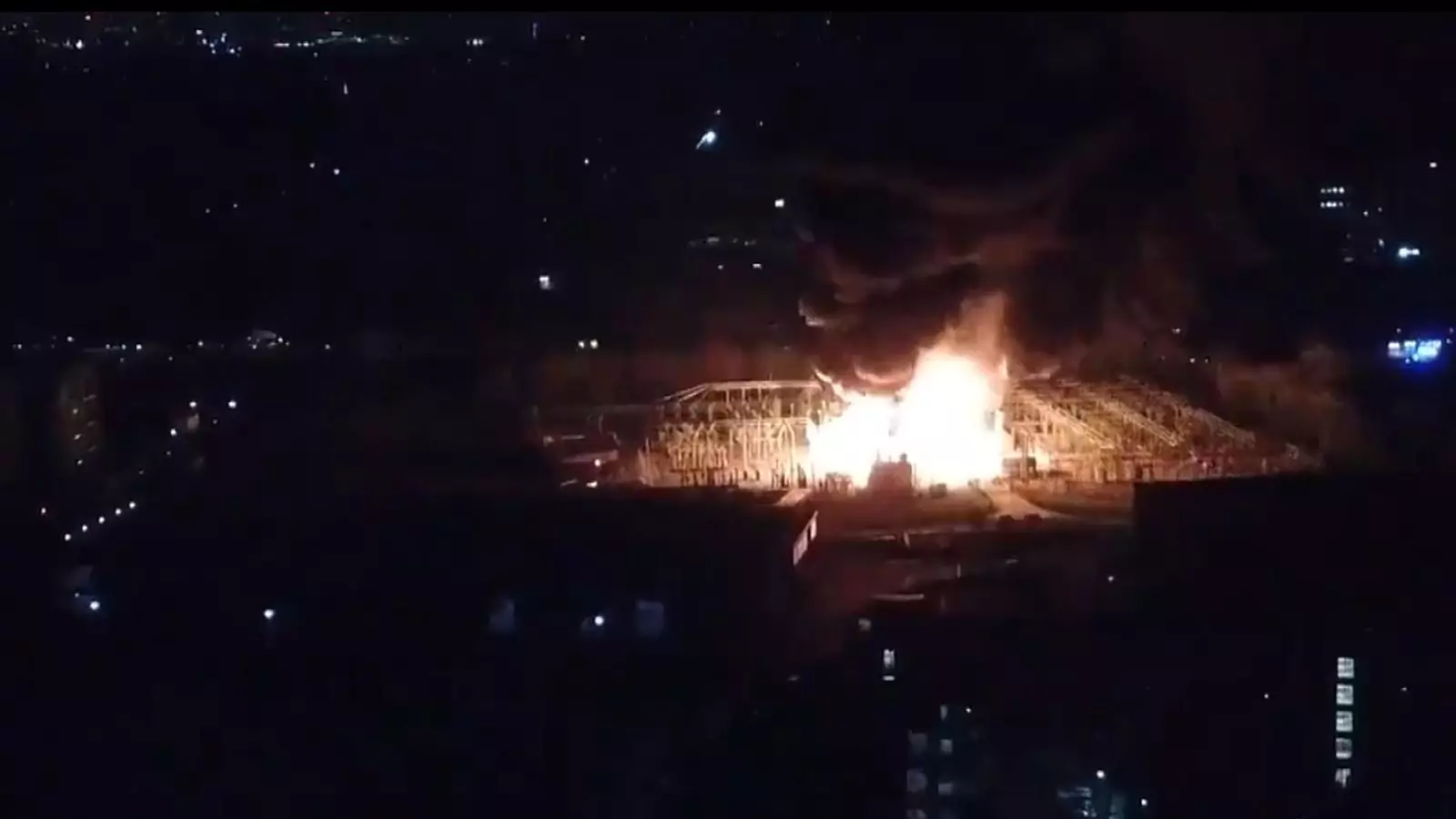On March 21, 2025, Heathrow Airport, one of the world’s busiest travel hubs, faced an unprecedented shutdown due to a catastrophic fire at a nearby electricity substation. The consequences of this disaster have not just disrupted travel plans for thousands but highlighted underlying faults in the infrastructure that supports such a colossal entity. With a spokesperson stating that power restoration was not adequately defined, this incident poses pressing questions about the reliability and preparedness of essential services.
It’s alarming that a power outage—a condition that should be manageable with contingency strategies—can bring operations to a complete standstill. Millions rely on Heathrow to connect them to their destinations, and the ramifications of this shutdown will ripple through the globe. Countless flights (reportedly around 1,351) have been either canceled or rerouted, causing havoc for airlines and passengers alike. The reinforced caution from British Airways, advising customers to avoid the airport entirely, is reflective of the serious nature of the incident and the lack of clarity surrounding it.
The Human Impact
While operational disruptions are challenging, we must not overlook the human element in this equation. Passengers, often stressed and anxious, now face uncertainty about their travel plans. The incapacity of authorities to provide timely updates only exacerbates their distress. The real cost, however, extends far beyond mere monetary losses for airlines and airports—it encompasses the emotional turmoil faced by individuals caught in this unfortunate situation.
Moreover, the fire led to evacuations in the surrounding areas, impacting local communities. An estimated 16,000 homes experienced electricity outages, showcasing that the implications of this crisis stretch far beyond the airport itself. Those affected are left grappling with the chaos, breathing in smoke, and living under the looming fear of a fire that not only disrupted their routines but compromised their day-to-day safety.
Emergency Services: A Race Against Time
The operational response to the fire has come under scrutiny as well. The London Fire Brigade deployed significant resources, with approximately 70 firefighters and 10 engines battling the blaze, which erupted from a transformer within the North Hyde substation. While the bravery of emergency responders is commendable, one can’t help but question: Was this incident entirely preventable?
When dealing with crucial infrastructure like airports, one would expect authorities to have comprehensive contingency plans in place. Poor maintenance or oversight could mean such fires are more than just random occurrences. The lack of clarity about the cause adds to a growing concern over safety protocols. Are we doing enough to protect our vital resources from avoidable disasters?
A Broader Perspective on Infrastructure Reliability
Incidents like the Heathrow fire trigger broader discussions about the reliability of national infrastructure. An airport naturally serves as a nerve center for international travel, and a major disruption raises alarms about systemic flaws that could jeopardize the safety, security, and convenience of air travel. If an accident at a substation can cause such widespread chaos, what does that say about our infrastructure’s ability to cope with unforeseen circumstances?
Countries need to critically assess their readiness for crises, and policymakers must face uncomfortable questions about the investments we make in critical infrastructure. Are we merely reacting instead of actively fortifying and innovating to meet future needs? As airports expand and passenger numbers rise—Heathrow alone welcomed a record 83.9 million travelers last year—the imperative for robust, resilient systems becomes ever clearer.
In a world increasingly relying on air travel, governments and corporations must prioritize safety and preparedness. The Heathrow incident is a wakeup call, urging us to evaluate how we protect our vital transportation networks and, by extension, the lives of the millions who depend on them.
Ultimately, incidents like these are unacceptable in an age where technology and knowledge provide the tools to prevent such widespread disruption. As citizens, we are entitled to demand better from those tasked with our safety, especially from entities that wield the economic and social power akin to Heathrow.


Leave a Reply